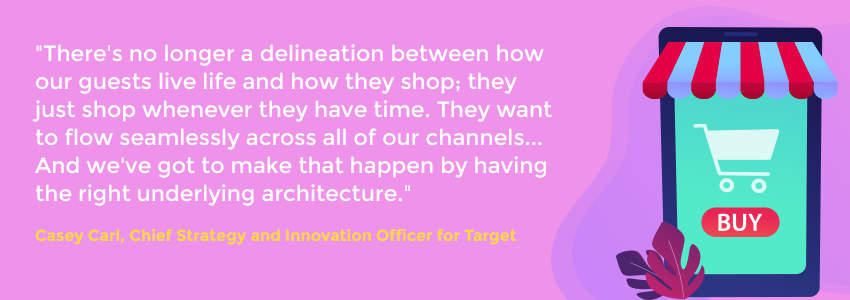Unsurprisingly, the pandemic’s impact on the retail industry was swift and significant. Consumer behaviour literally changed overnight with the government implementation of lockdown, and even now stores have reopened, retailers have a lot of work to do to reclaim the revenue lost during lockdown.
That being said, initial signs are positive, with the Office for National Statistics reporting a 13.9% growth month-on-month for June; and arguably retail more so than any other industry, is expertly equipped to adapt to changes in consumer behaviour. So, while things are still relatively fresh, we thought we’d highlight some of the retail trends which have gained momentum during and post-Covid19.
Golden age of localisation
Local convenience stores have experienced a huge surge during lockdown, with many individuals wanting to avoid large queues and public transport. As such, Co-op won a 7% share of the market in April (last achieved in 2011) and George MacDonald, Executive Editor of Retail Week, was recently quoted saying we may be entering the ‘golden age’ of retail localisation.
The way MacDonald describes this ‘golden age’, is as a once-in-a-lifetime opportunity for independent stores to strengthen and secure their unique place on the highstreet. And with a recent study revealing that 55% of polled UK adults want to shop more locally, this certainly seems to be the case.
Brand communities
For this one, we’re simply going to reference the weekly ‘clap for carers’. As Izzy Ashton, deputy editor of insight puts it –
“Marketing is now less about the hard sell, and more about pulling customers into a brand’s community”.
Creating a community among customers is a great way to promote customer engagement and retention. It can be achieved in a number of ways – loyalty schemes, customer competitions, for example best use of a product or best caption for a brand post.
Really how this is achieved will be dependent on your business model, brand and customer audience. But with a recent survey reporting that 8 of 10 recipients considered their local high street vital to their community, it’s easy to see how valuable this could be for local retailers.
The continued rise of eCommerce
Naturally, eCommerce has experienced significant growth during lockdown. The way we see it, this has been largely driven by two main factors.
The first and obvious is that lockdown forced the closure of any store deemed ‘non-essential’ and the second, is the growing number of silver surfers getting on board with online shopping.
Only time will tell if the older generation will continue to adopt a more digital approach, but interestingly, in June when stores were able to reopen, online retail sales continued to surge, reporting a 33.9% year-on-year growth. So the data does suggest that consumers will be sticking to online shopping, for the immediate future at least. As such, enhancing eCommerce offerings is essential. Just two great examples include – extending returns policies and diversifying delivery options.
Additionally, this serves as a reminder of how important it is for retailers to provide customers a smooth omnichannel experience:

Not a recent quote, but the point still stands.
Green consumerism
Early on in lockdown, many consumers were struggling to buy their usual, favourite products. While this does relate mainly to food purchases (does anyone remember how difficult it was to find flour and eggs?!), it has definitely impacted purchasing behaviour more generally.
Ultimately, not being able to buy the usual food shop for the week, left some questioning how much they actually need. Additionally, as many individuals have had to take voluntary pay cuts, been furloughed, or may have even lost their jobs, it logically follows that individuals are being more mindful of their spending. This has led many consumers to trade off, or trade down on some of their favourite products.
But perhaps most remarkably, 47% of customers identified as trading off are focusing on more environmentally friendly brands. Thus it’s likely this will continue to be a focus for consumers and consequently retailers.
Fashion subscription businesses
Fashion retailers were one of the hardest hit when the coronavirus crisis first emerged, with a reported 23.1% year-on-year decline for March. But with retail sales picking up and stores reopening, many are thinking about how best to safeguard their business for the future. In recent years, fashion retail subscriptions have really grown in popularity, and as 33% of Brits reported that the main reason for not using a subscription style service was that they enjoyed shopping in person, this group of consumers could be much more open to the idea post-lockdown. Given that retailers are still reporting a significant decline in footfall, it’s certainly worth investigating.
As the title suggests, none of these trends are new to the retail industry, the pandemic has simply emphasised them. To businesses already benefiting from the changes, it’s paramount marketing efforts are focused on how to retain the additional revenue, and for businesses elsewhere, it’s time to adapt.
As always, any change a business makes is only as effective as the communication of said changes, to their customers. So when your business is ready to launch a customer campaign, remember our experienced team is on hand to help. To get in touch, simply email info@textmarketer.co.uk or call 0117 205 0202.
